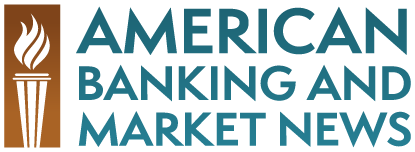According to the Office of the Comptroller of the Currency, J.P. Morgan Chase (JPM) and Bank of America Corp. (BAC) hold $123 trillion of derivative positions.
J.P. Morgan Chase holds the top spot with $76.4 trillion, while Bank of America Corp. is second with 46.6. The next two spots are held by Citibank (C) and Goldman Sachs (GS) each with $41.1 trillion
To put this into perspective, according to Agora Financials “The 5-minute Forecast”, the top four banks hold derivatives contracts “worth” roughly 16 times US GDP.
The hope is that banks, particularly those with the notorious designation “Too Big to Fail” have reduced their exposure to derivatives to avoid a repeat of the crash of 2008.
The reality is mixed.
For example, according to the Bank for International Settlements (BIS), worldwide derivatives contracts total $615 trillion.
Thus, those four banks also hold more than one-third of the world’s total.
According to the BIS (Bank for International Settlements), the notional value of all derivatives held by banks was $596 trillion at the end of 2007. So the notional value has actually increased by the end of 2009.
This would seem to suggest that the appetite of the world’s banks for derivatives has not diminished. And that is leading many financial professionals and lawmakers to support the idea of forcing all derivatives transactions onto tightly regulated exchanges.
However, other data reported by the BIS shows a potential for gradual improvement in the risks associated with derivatives over the past two years. Simply put, gross market value, is the BIS estimate of the cost of replacement of all derivatives, and the gross credit exposure the estimated potential loss risk for the banks.
The changes over the past year (as of year end 2009) are as follows:
Notional Value – Up 8%
Gross Market Value – Down 24%
Gross Credit Exposure – Down 35%
The changes over the past two years (as of year end 2009) are as follows:
Notional Value – Up 3%
Gross Market Value – Up 9%
Gross Credit Exposure – Up 33%
Overall, banks use derivatives to manage interest rate risk. However, what was known in the industry for years, but became clear throughout the financial crisis, was that many commercial banks were using these same vehicles for trading, compounding their exposure beyond what would be considered acceptable risk management.
In the 2008 crisis, that risk was moved away from the banks and onto the taxpayer. According to many experts, the proposed financial reform legislation does not eliminate the exposure.
That’s where the numbers today tell a conflicting story.


